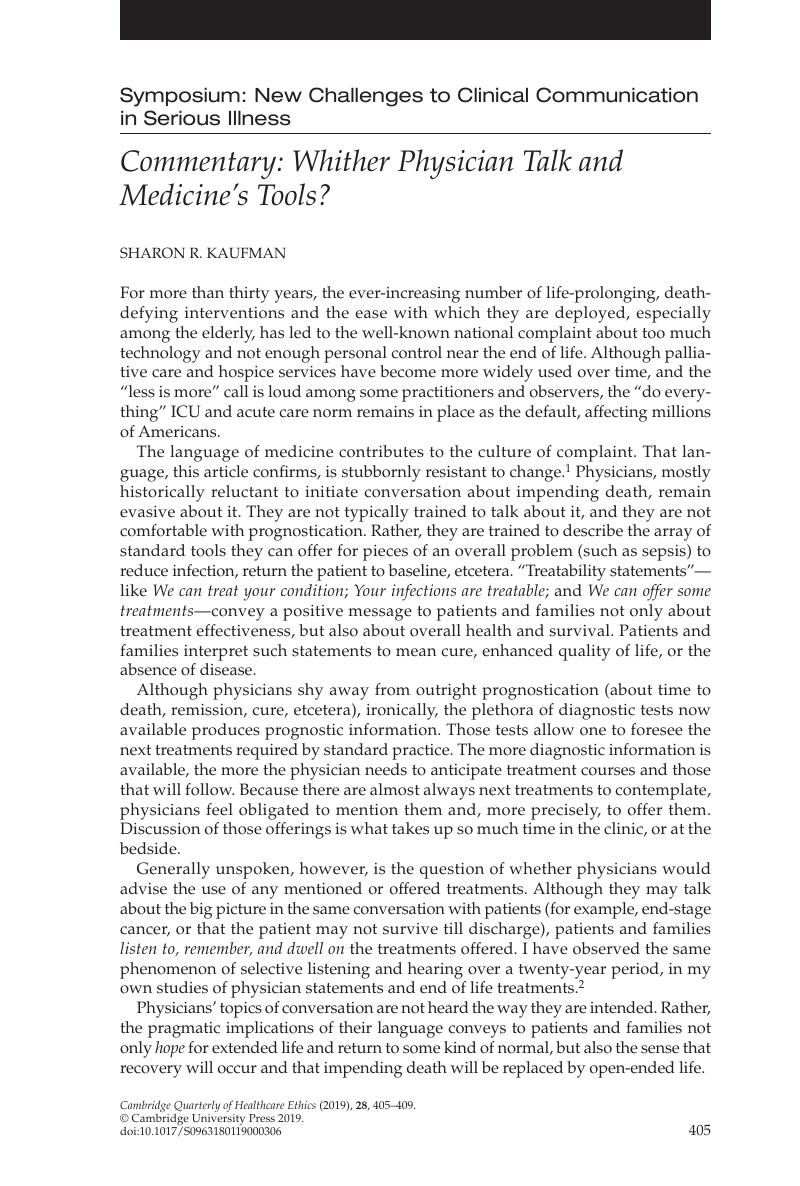Article contents
Commentary: Whither Physician Talk and Medicine’s Tools?
Published online by Cambridge University Press: 12 July 2019
Abstract

- Type
- Symposium: New Challenges to Clinical Communication in Serious Illness
- Information
- Copyright
- Copyright © Cambridge University Press 2019
References
Notes
1. Batten, JN, Wong, BO, Hanks, WF, Magnus, DC. Treatability statements in serious illness: The gap between what is said and what is heard. Cambridge Quarterly 2019; 28(3):394–404.Google Scholar
2. Kaufman, S. ...And a Time to Die: How American Hospitals Shape the End of Life. NY: Scribner; 2005; Ordinary Medicine: Extraordinary Treatments, Longer Lives, and Where to Draw the Line. Durham: Duke University Press; 2015.Google Scholar
3. See note 2, Kaufman 2015, at 199.
4. Near Death, produced, directed and edited by Frederick Wiseman. Exit Films, a Zipporah Films Release. Shown in NY City in October 1989; first aired on public television January 21, 1991. For reviews, see Maslin J. Frederick Wiseman views life and death. New York Times, October 7, 1989; and Wolf SM. Near death—in the moment of decision. New England Journal of Medicine 1990;322:208–10.
5. Gawande, A. Being Mortal: Medicine and What Matters in the End. New York: Henry Holt and Company; 2014:217–9.Google Scholar
6. SUPPORT Principal Investigators. A controlled trial to improve care for seriously ill hospitalized patients. The study to understand prognoses and preferences for outcomes and risks of treatments (SUPPORT). JAMA 1995;274(20):1591–8.
- 12
- Cited by


